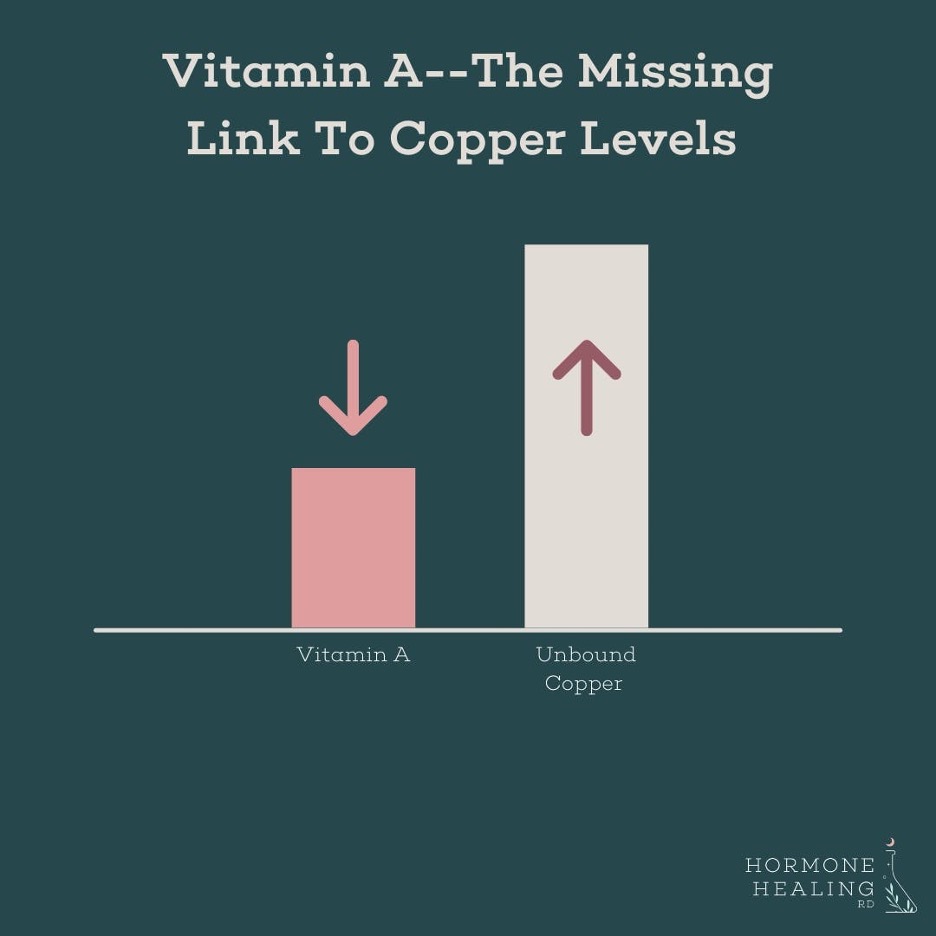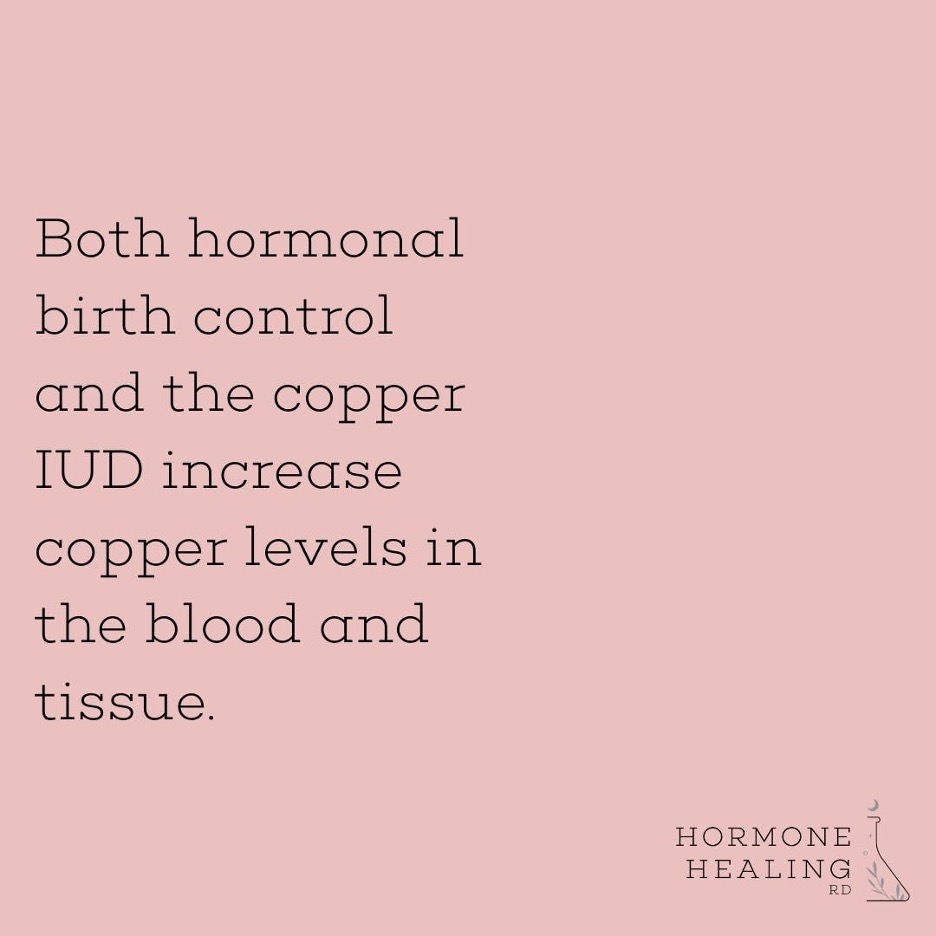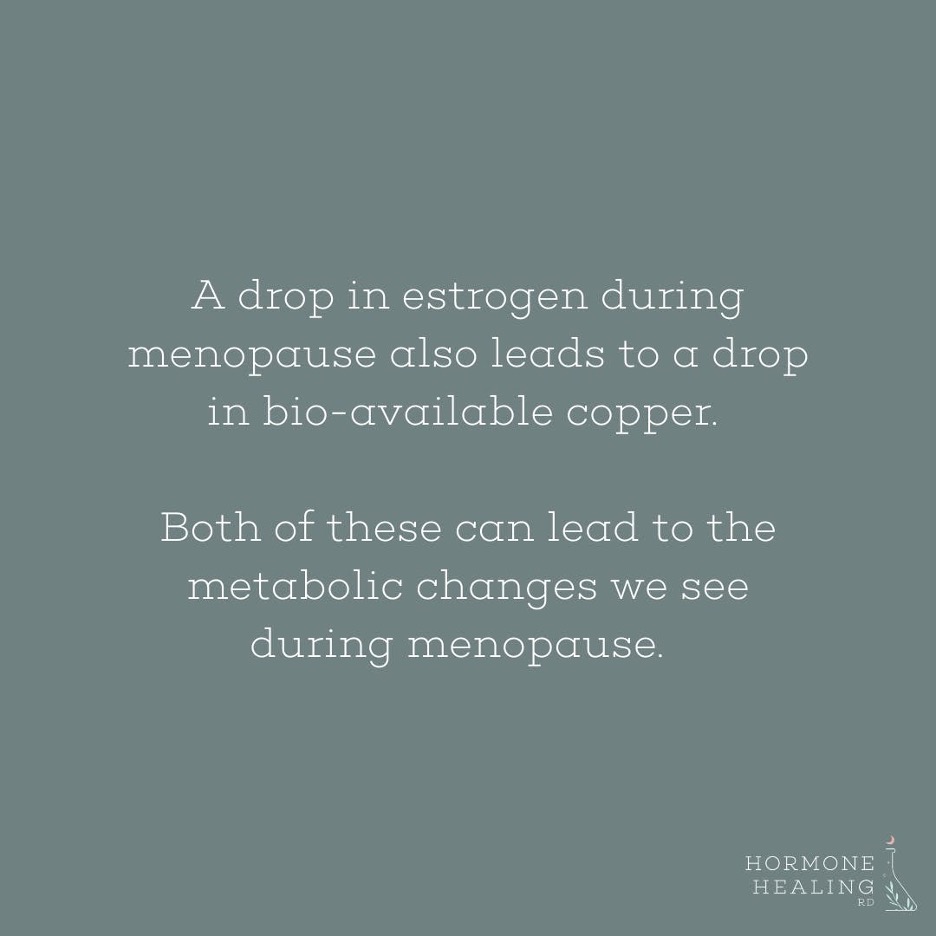I often talk about the importance of copper concerning hormones, but I’ve been getting frequent questions surrounding copper toxicity over the last couple of years. Copper toxicity has become a hot topic ever since women have begun responding negatively to the copper IUD. I understand the concern about excess unavailable copper; however, copper isn’t all harmful. Copper is the key to healthy metabolism and helps our bodies produce ATP (energy). When we don’t have adequate copper, our metabolism slows, which leads to period problems.
I want you to know that copper is not harmful and that both low copper and high copper levels are not suitable for our bodies. When we have elevated copper levels, whether in our blood or on a hair mineral analysis, our bodies still can’t use it. The reason is that it is biologically unavailable. For this reason, both high and low copper can show up in similar ways. To better help you understand copper imbalances, I will first start with vitamin A and then dig into the different ways copper impacts us throughout various life stages.
Vitamin A—The Missing Link to Copper Imbalance
Copper tends to be the main focus for copper toxicity, but in reality, we have to understand that we need vitamin A for our bodies to use copper properly. Recently, I did a newsletter and a blog on vitamin A and how it is essential for healthy hormones. How vitamin A regulates copper and allows us to use it in the body is a big part. To have healthy thyroid function and make energy, we need to use copper, which requires vitamin A. It allows us to convert copper to ceruloplasmin and use it in the body. Ceruloplasmin makes copper bioavailable and enables it to do its many essential jobs, like produce energy and metabolize iron.

How to Get More Vitamin A?
It is best to get vitamin A from animal foods. The main reason for this is because it gives us retinol, which is very different from beta carotene (the type of vitamin A found in plants). Our bodies have to convert beta carotene into retinol, which varies from 5 – 65% in humans. Studies have shown that too much beta carotene can limit the conversion of vitamin A in the body.
Because vitamin A is a fat-soluble vitamin, it requires fat to be absorbed appropriately. We need to get our vitamin A from foods that contain saturated fat. Here are the best forms of vitamin A:
Hormonal Birth Control & The Copper IUD
Often people hear copper toxicity and automatically assume that it can only be from the copper IUD. The interesting thing is that the birth control pill can also cause an increase in copper levels, especially progestin-only birth control. Studies have shown that progestin-only birth control increases the serum levels of copper.
The copper IUD is the most obvious in increasing copper levels. Still, the research shows that serum copper levels initially go up in women with the copper IUD, but they then go back down. So, where does the copper go? It gets stored in our tissues, and when this unbound copper increases in the body, so do estrogen. This means that we have more copper and estrogen stored in our tissues, causing more inflammation and estrogen-dominant symptoms. This can occur even if your blood work says you have low estrogen. If serum levels of copper are high, the answer isn’t to eliminate all copper. We need it. For those who plan to stay on the pill or keep their copper IUD, the solutions are to make our stored copper available for use by increasing vitamin A, reducing your overall exposure to excess copper, and taking whole food vitamin C.

Prenatal & Postpartum Copper Imbalances and Depression
As estrogen levels rise during pregnancy, copper levels increase as well. This rise can impact mental processing, anxiety, panic, and depression, leading to postpartum depression in new moms. This topic fascinates me since many of the postpartum women I perform a hair mineral analysis show high copper levels. It’s essential to keep in mind that copper increases during pregnancy since estrogen increases, but it should go back down after birth. When this does not occur, it can contribute to mental health and mood shifts.
I don’t want anyone to fear copper as it is particularly crucial for pregnancy. It helps us make energy, remember? When we don’t have adequate copper and vitamin A, pregnancy may become a lot more complicated. However, having too much-unbound copper during pregnancy has been linked with preeclampsia development (high blood pressure), growth restriction, and neurological issues. On the other extreme, having too little copper during pregnancy has been linked to increased birth defects, low birth weight, and anemia. One of the most interesting things about copper and pregnancy is how it impacts egg implantation. Low copper can lead to difficulty in egg implantation. Having healthy, bioavailable copper is important for maintaining pregnancy. Miscarriage statistics have increased as the copper in our soil and diets decrease. It makes me wonder if there is a connection.
One significant aspect of copper in pregnancy is that we need it for a fetus to produce blood vessels. However, at the end of pregnancy, copper levels should come down to normal. In many instances, they do not, causing postpartum depression.

Copper & Hormonal Changes in Menopause
So far, we’ve discussed how different types of birth control, pregnancy, and postpartum can impact our body’s copper levels. Now we will address menopause. With the release of estrogen comes the increase in production of ceruloplasmin—remember, this protein helps copper do its many jobs around the body. As estrogen decreases, ceruloplasmin can as well. This means less bioavailable copper for the body, which can lead to many of the symptoms women experience during menopause, especially those related to metabolism such as energy, sleep issues, libido, hair thinning, etc.
While the main focus of menopause is that we are missing out on essential sex hormones like estrogen and progesterone, I think focusing on balancing minerals is just as important. Another significant change in menopause is that we are no longer bleeding and getting rid of iron each month. There is so much focus on estrogen and bone health, but what about excess iron? An accumulation of iron can lead to osteoporosis and is common during menopause. Supporting your minerals and fueling your body appropriately will help improve the body’s overall health and allow those in menopause to donate blood regularly. Blood donation is a great way to eliminate excess iron and kickstart the iron recycling system in the body. Learn more in my iron posts here and here.

Increased Exposure to Unbound Copper
Many of us have increased exposure to high levels of copper from our environment. We are exposed to copper from the water in copper pipes, copper sulfate on produce, antibiotics, and more. Soy products contain high levels of copper. Increased copper exposure can lead to an increase in unbound copper in the body—especially in vegetarians since retinol intake is typically low. While vitamin A should always be prioritized, it helps understand if you have daily exposures making it difficult for your body to use copper properly.
If you can relate to any of these scenarios involving excess copper, vitamin A should be prioritized. If I were going to give one recommendation for postpartum moms, it would be to take a quality whole food vitamin C and make sure you’re eating or taking beef liver. It will provide you with the vitamin A needed to use stored copper properly. If you think you are struggling with copper imbalances, I highly recommend getting a hair mineral analysis.
